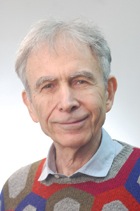|
Title Associate Professor Emeritus Education Ph.D. Physics – University of California Berkeley 1967 Previous Experience
Professional Interests My research consists of adapting physics modeling techniques and concepts to answer some of the outstanding issues in theoretical medicine. Modeling HIV infection led to an understanding of transient AIDS in the acute infection stage of the disease, chronic AIDS at the end of the incubation period, and the prediction that there was no biomedical difference between Long Term Non-Progressors and progressors to AIDS. The transition from HIV infection to AIDS was shown to be driven by mutations of the virus into more infectious (virulent) forms. Using an ordered mutation model to describe the development of cancers led to the prediction that natural immunity to breast and prostate cancers exists in the majority of their risk populations, a prediction that is consistent with the latest ideas in immunoediting. The modeling also determined the sizes of the sporadic and hereditary susceptible populations. Applying mutation models to the development of Alzheimer’s disease led to the prediction that as much as 74% of men and 79% of women are naturally immune to the development of the disease. The modeling also led to the estimate that 451,000 Americans had Alzheimer’s disease in the year 2000, about 10% of some of the estimates in the popular press. Mutation model descriptions of Schizophrenia led to the prediction that less than 0.2% of the population of the USA and Britain are born with a susceptibility to developing the disease, with the rest having natural immunity to it. The modeling results suggest that a universal model of schizophrenia that fits data in all countries exists and that the incidence rate as a function of age in a country is determined by finding the values of only four independent parameters. The simplest explanation of these results is that regular internal biologicalprocesses generate schizophrenic mutations and that random external environmental factors have nothing to do with the development of this disease. Selected Publications Widespread Immunity to Breast and Prostate Cancers is Predicted by a Novel Model that also Determines Sporadic and Hereditary Susceptible Population Sizes, Math. Model. Nat. Phenom., Vol. 5, No. 3, 2010, pp. 134-164. Calculating the number of people with Alzheimer’s disease in any country using saturated mutation models of brain cell loss that also predict widespread natural immunity to the disease, Computation and Mathematical Methods in Medicine, Vol. 11, No. 2, June 2010, 119-159. |
